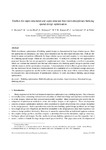Toolbox for super-structured and super-structure free multi-disciplinary building spatial design optimisation
| dc.contributor.author | Boonstra, S | |
| dc.contributor.author | van der Blom, K | |
| dc.contributor.author | Hofmeyer, H | |
| dc.contributor.author | Emmerich, M | |
| dc.contributor.author | van Schijndel, J | |
| dc.contributor.author | de Wilde, Pieter | |
| dc.date.accessioned | 2018-02-13T11:53:44Z | |
| dc.date.issued | 2018-04 | |
| dc.identifier.issn | 1474-0346 | |
| dc.identifier.issn | 1873-5320 | |
| dc.identifier.uri | http://hdl.handle.net/10026.1/10769 | |
| dc.description.abstract |
Multi-disciplinary optimisation of building spatial designs is characterised by large solution spaces. Here two approaches are introduced, one being super-structured and the other super-structure free. Both are different in nature and perform differently for large solution spaces and each requires its own representation of a building spatial design, which are also presented here. A method to combine the two approaches is proposed, because the two are prospected to supplement each other. Accordingly a toolbox is presented, which can evaluate the structural and thermal performances of a building spatial design to provide a user with the means to define optimisation procedures. A demonstration of the toolbox is given where the toolbox has been used for an elementary implementation of a simulation of co-evolutionary design processes. The optimisation approaches and the toolbox that are presented in this paper will be used in future efforts for research into- and development of optimisation methods for multi-disciplinary building spatial design optimisation. | |
| dc.format.extent | 86-100 | |
| dc.language | en | |
| dc.language.iso | en | |
| dc.publisher | Elsevier | |
| dc.subject | Building optimisation | |
| dc.subject | Multi-disciplinary optimisation | |
| dc.subject | Super-structures | |
| dc.subject | Structural design | |
| dc.subject | Building physics | |
| dc.title | Toolbox for super-structured and super-structure free multi-disciplinary building spatial design optimisation | |
| dc.type | journal-article | |
| dc.type | Journal Article | |
| plymouth.author-url | https://www.webofscience.com/api/gateway?GWVersion=2&SrcApp=PARTNER_APP&SrcAuth=LinksAMR&KeyUT=WOS:000434745800008&DestLinkType=FullRecord&DestApp=ALL_WOS&UsrCustomerID=11bb513d99f797142bcfeffcc58ea008 | |
| plymouth.volume | 36 | |
| plymouth.publication-status | Published | |
| plymouth.journal | Advanced Engineering Informatics | |
| dc.identifier.doi | 10.1016/j.aei.2018.01.003 | |
| plymouth.organisational-group | /Plymouth | |
| plymouth.organisational-group | /Plymouth/Faculty of Arts, Humanities and Business | |
| plymouth.organisational-group | /Plymouth/REF 2021 Researchers by UoA | |
| plymouth.organisational-group | /Plymouth/REF 2021 Researchers by UoA/UoA13 Architecture, Built Environment and Planning | |
| dcterms.dateAccepted | 2018-01-19 | |
| dc.rights.embargodate | 2019-3-20 | |
| dc.identifier.eissn | 1873-5320 | |
| dc.rights.embargoperiod | Not known | |
| rioxxterms.versionofrecord | 10.1016/j.aei.2018.01.003 | |
| rioxxterms.licenseref.uri | http://www.rioxx.net/licenses/all-rights-reserved | |
| rioxxterms.licenseref.startdate | 2018-04 | |
| rioxxterms.type | Journal Article/Review |


